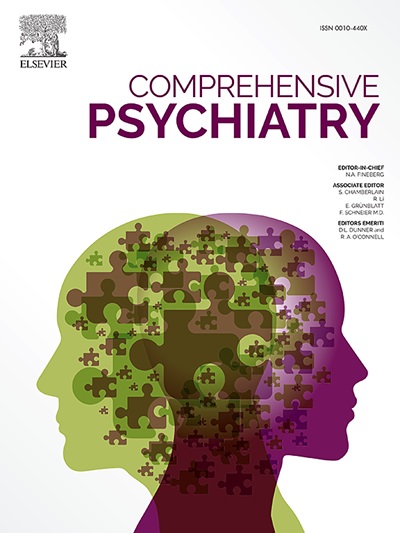Investigating attentional bias in low-dependence smokers with steady-state visual evoked potentials (SSVEPs): Linking wanting, liking, and neural responses
IF 4.2
2区 医学
Q1 PSYCHIATRY
引用次数: 0
Abstract
While traditional electrophysiological measures such as ERPs have been successfully used to study individual differences, their signal-to-noise ratio often limits the precision of single-subject analyses. To address this, the present study had two primary aims: (1) to explore the utility of steady-state visual evoked potential (SSVEP) method for investigating addiction-specific cognitive processes and (2) to examine the relationship between the imbalance of self-reported wanting and liking, and the neural correlates of tobacco smoking-related attentional bias. A total of 39 participants, including smokers (N = 22) and non-smokers (N = 17), were exposed to a passive visual oddball paradigm comprising rapidly flickering stimuli under two conditions: neutral (e.g., office tools) and smoking-related (e.g., cigarettes). Neural activity was recorded using EEG, and frequency-specific SSVEP responses were analyzed to assess attentional bias toward smoking-related stimuli. The results demonstrated that SSVEPs effectively captured the well-documented attentional bias effect between smokers and non-smokers. Furthermore, beyond group-level comparisons, SSVEPs proved suitable for examining attentional bias at the individual level, allowing for the investigation of correlations between neural responses to smoking cues and the difference between self-reported wanting and liking (WmL) imagined before, during and after smoking. A moderate to strong positive correlation was observed specifically for WmL-after and attentional-bias, supporting two conclusions: (1) SSVEPs represent a promising tool for assessing addiction-specific cognitive processes, and (2) self-reported assessments of incentive sensitization theory (IST) may be associated with attentional bias characteristic of addictive behaviors. These findings highlight the potential value of self-report measures in human IST research and underscore the need for further investigation.
具有稳态视觉诱发电位(ssvep)的低依赖性吸烟者的注意偏倚研究:连接想要、喜欢和神经反应
虽然传统的电生理测量如erp已经成功地用于研究个体差异,但它们的信噪比往往限制了单受试者分析的精度。为了解决这个问题,本研究主要有两个目的:(1)探索稳态视觉诱发电位(SSVEP)方法在研究成瘾特异性认知过程中的应用;(2)研究自我报告的欲望和喜欢的不平衡与吸烟相关的注意偏倚的神经关联之间的关系。共有39名参与者,包括吸烟者(N = 22)和非吸烟者(N = 17),在两种条件下暴露于被动视觉怪异范式,包括快速闪烁的刺激:中性(例如办公工具)和吸烟相关(例如香烟)。使用脑电图记录神经活动,并分析频率特异性SSVEP反应以评估对吸烟相关刺激的注意偏倚。结果表明,ssvep有效地捕获了吸烟者和非吸烟者之间的注意偏倚效应。此外,除了群体水平的比较,ssvep被证明适用于在个体水平上检查注意偏差,允许研究吸烟线索的神经反应与吸烟前、吸烟中和吸烟后想象的自我报告的想要和喜欢(WmL)之间的差异之间的相关性。WmL-after和注意偏倚之间存在中强正相关,支持两个结论:(1)ssvep是评估成瘾特异性认知过程的一个有希望的工具;(2)自我报告的激励敏感化理论(IST)评估可能与成瘾行为的注意偏倚特征有关。这些发现突出了自我报告测量在人类IST研究中的潜在价值,并强调了进一步研究的必要性。
本文章由计算机程序翻译,如有差异,请以英文原文为准。
求助全文
约1分钟内获得全文
求助全文
来源期刊

Comprehensive psychiatry
医学-精神病学
CiteScore
12.50
自引率
1.40%
发文量
64
审稿时长
29 days
期刊介绍:
"Comprehensive Psychiatry" is an open access, peer-reviewed journal dedicated to the field of psychiatry and mental health. Its primary mission is to share the latest advancements in knowledge to enhance patient care and deepen the understanding of mental illnesses. The journal is supported by a diverse team of international editors and peer reviewers, ensuring the publication of high-quality research with a strong focus on clinical relevance and the implications for psychopathology.
"Comprehensive Psychiatry" encourages authors to present their research in an accessible manner, facilitating engagement with clinicians, policymakers, and the broader public. By embracing an open access policy, the journal aims to maximize the global impact of its content, making it readily available to a wide audience and fostering scientific collaboration and public awareness beyond the traditional academic community. This approach is designed to promote a more inclusive and informed dialogue on mental health, contributing to the overall progress in the field.
 求助内容:
求助内容: 应助结果提醒方式:
应助结果提醒方式:


